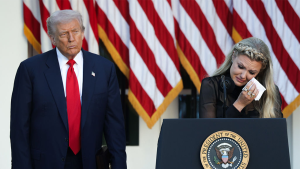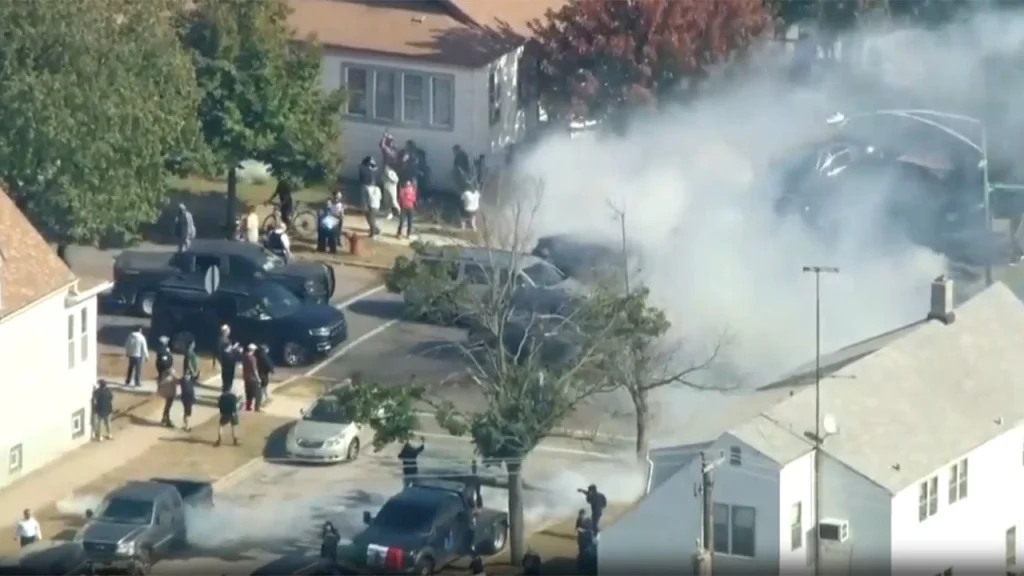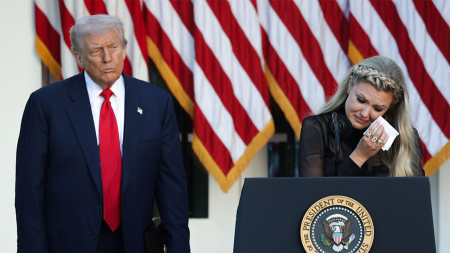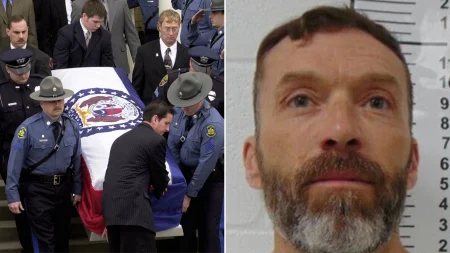Immigration Enforcement Operation in Chicago Leads to Tense Confrontation
In a dramatic sequence of events that unfolded on the streets of Chicago’s South Side, an immigration enforcement operation escalated into a contentious confrontation between federal agents, detainees, and local protesters. The incident, which occurred Tuesday morning near South Avenue N, began when two Venezuelan migrants allegedly rammed their vehicle into a Border Patrol vehicle before attempting to flee. Luis Gerardo Pirela-Ramirez and Yonder Enrique Tenefe-Perez were subsequently detained following a vehicle pursuit that ended with Border Patrol agents performing what they described as an “authorized precision immobilization technique.” As the situation unfolded, local residents gathered at the scene, and what started as observation reportedly transformed into protest, with some individuals allegedly throwing objects at federal agents. In response, agents deployed tear gas into the street, affecting not only protesters but also exposing thirteen Chicago Police Department officers to the chemical agent.
The incident highlights the growing tensions surrounding immigration enforcement actions, particularly in sanctuary cities like Chicago where local and federal authorities often operate under different policies regarding undocumented residents. A Department of Homeland Security spokesperson characterized the event as part of “a growing and dangerous trend of illegal aliens violently resisting arrest and agitators and criminals ramming cars into our law enforcement officers.” The spokesperson further connected the incident to broader political divisions, noting that federal agents were “receiving no pay thanks to the Democrats’ government shutdown.” This framing suggests that the confrontation in Chicago is being viewed through a national political lens by some federal authorities, potentially amplifying existing tensions around immigration policy.
The Chicago Police Department, which was not directly involved in the federal operation, issued a statement clarifying their role in the aftermath. According to their account, CPD officers responded to what was initially reported as an auto accident involving federal authorities. As the situation escalated and a crowd gathered, CPD supervisors attempted to de-escalate tensions “for the safety of everyone, including community members who were gathering at the location.” The department acknowledged that when individuals began throwing objects at federal agents, those agents deployed tear gas, resulting in thirteen CPD members being exposed and requiring exposure reports. The department’s statement carefully positions local police as responding to, rather than participating in, the federal operation.
The incident drew swift criticism from Illinois Governor JB Pritzker, who accused Immigration and Customs Enforcement of “recklessly throwing tear gas into our neighborhoods and busy streets, including near children at school and CPD officers.” The Democratic governor’s statement on social media platform X characterized the tear gas deployment as “dangerous chemical weapons” being used in “peaceful American communities,” rhetorically connecting the incident to the broader national debate about immigration enforcement tactics. His criticism reflects the often tense relationship between Democratic-led state governments and federal immigration enforcement agencies, particularly during periods of heightened enforcement activities.
Adding another layer of controversy to the incident, attorneys from the law firm Romanucci & Blandin claimed that a 15-year-old American citizen was improperly detained during the operation. According to their account, the teenager was “grabbed off a Chicago East Side street,” physically restrained, and held in custody for approximately five hours without being permitted to contact his mother. Attorney Antonio M. Romanucci used particularly stark language to describe the situation, comparing it to how “people disappear in autocracies” and characterizing it as following “the playbook of authoritarian regimes.” This allegation raises serious questions about identification procedures and due process protections during immigration enforcement operations, particularly when they occur in densely populated urban areas with mixed-status communities.
This incident in Chicago illustrates the complex and often volatile intersection of federal immigration policy, local law enforcement responsibilities, and community responses. As immigration continues to be a divisive political issue nationally, enforcement actions like the one on Tuesday risk becoming flashpoints for broader tensions. The divergent accounts from federal authorities, local police, state officials, and community representatives highlight how different stakeholders interpret the same events through distinct lenses shaped by their positions and priorities. For residents of affected communities, particularly immigrant communities, such operations create an atmosphere of uncertainty and fear, while raising important questions about appropriate enforcement tactics, community safety, and civil liberties. As immigration remains at the forefront of American political discourse, incidents like this one will likely continue to provoke debate about how enforcement should be conducted and what limits should exist.










